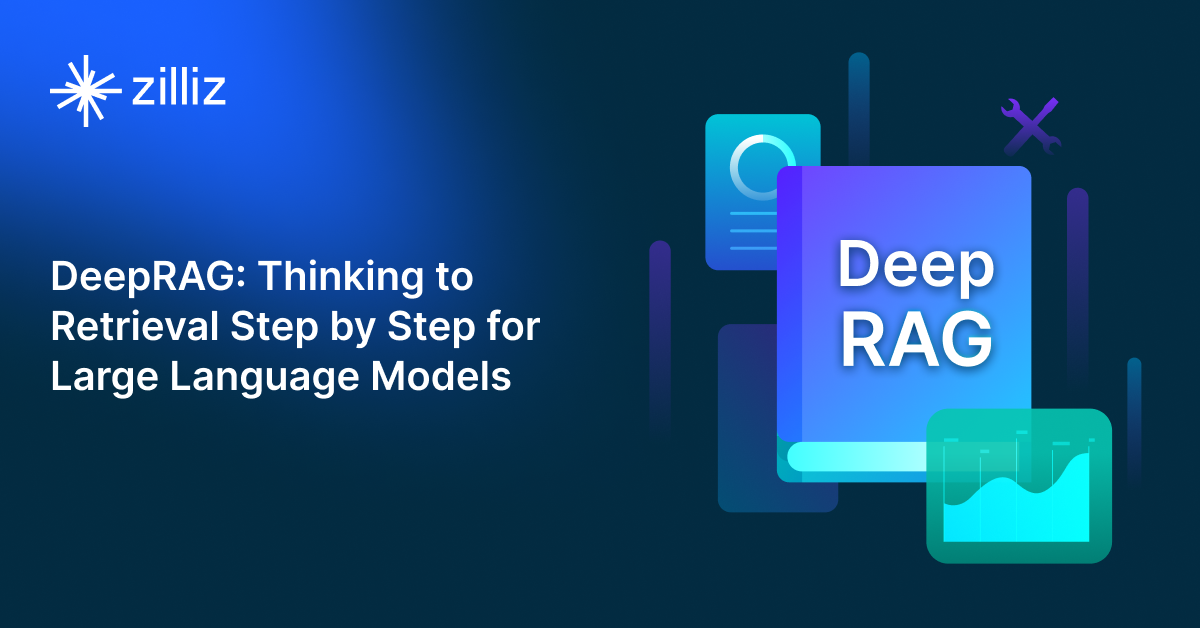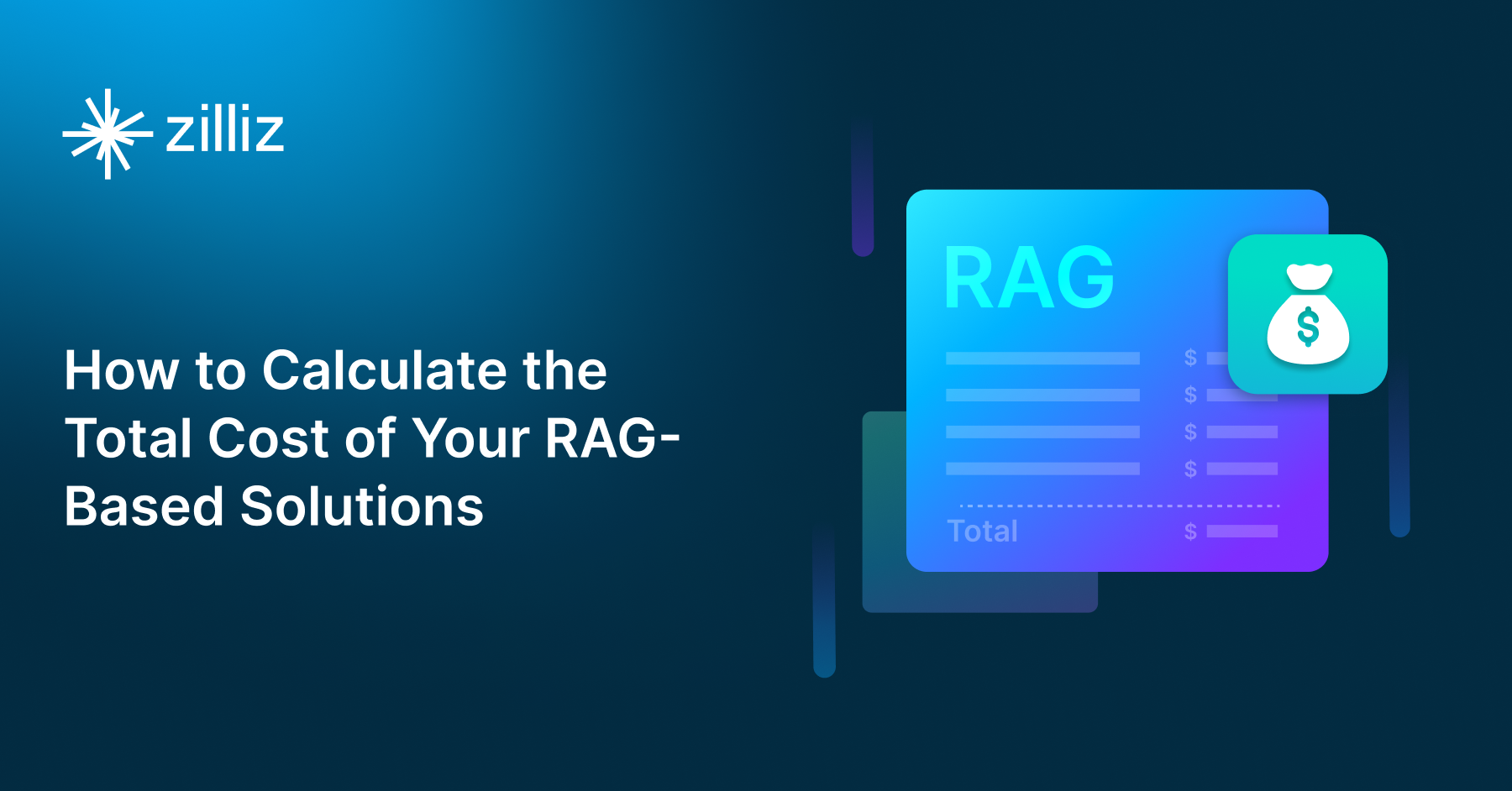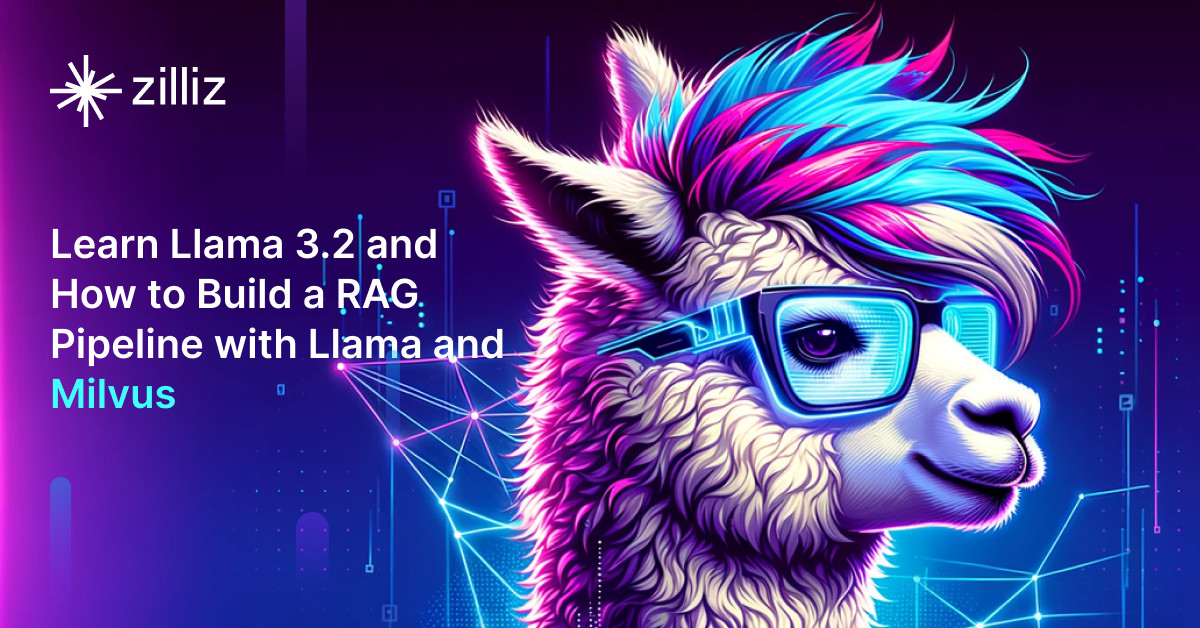Build RAG Chatbot with LangChain, LangChain vector store, Fireworks AI Deepseek R1 Distill Qwen 7B, and Ollama all-minilm
Introduction to RAG
Retrieval-Augmented Generation (RAG) is a game-changer for GenAI applications, especially in conversational AI. It combines the power of pre-trained large language models (LLMs) like OpenAI’s GPT with external knowledge sources stored in vector databases such as Milvus and Zilliz Cloud, allowing for more accurate, contextually relevant, and up-to-date response generation. A RAG pipeline usually consists of four basic components: a vector database, an embedding model, an LLM, and a framework.
Key Components We'll Use for This RAG Chatbot
This tutorial shows you how to build a simple RAG chatbot in Python using the following components:
- LangChain: An open-source framework that helps you orchestrate the interaction between LLMs, vector stores, embedding models, etc, making it easier to integrate a RAG pipeline.
- LangChain in-memory vector store: an in-memory, ephemeral vector store that stores embeddings in-memory and does an exact, linear search for the most similar embeddings. The default similarity metric is cosine similarity, but can be changed to any of the similarity metrics supported by ml-distance. It is intended for demos and does not yet support ids or deletion. (If you want a much more scalable solution for your apps or even enterprise projects, we recommend using Zilliz Cloud, which is a fully managed vector database service built on the open-source Milvusand offers a free tier supporting up to 1 million vectors.)
- Fireworks AI Deepseek R1 Distill Qwen 7B: A compact yet powerful language model designed for high-performance NLP tasks. With its 7 billion parameters, it effectively balances efficiency and accuracy, making it ideal for text generation, summarization, and chat applications. It is particularly suited for developers needing a versatile model that delivers rapid insights while conserving computational resources.
- Ollama all-minilm: Ollama all-minilm is a lightweight transformer-based model designed for efficient natural language understanding and generation tasks. Boasting a compact architecture, it excels in scenarios where computational resources are limited, making it ideal for mobile applications and real-time chatbots while maintaining competitive performance in language tasks.
By the end of this tutorial, you’ll have a functional chatbot capable of answering questions based on a custom knowledge base.
Note: Since we may use proprietary models in our tutorials, make sure you have the required API key beforehand.
Step 1: Install and Set Up LangChain
%pip install --quiet --upgrade langchain-text-splitters langchain-community langgraph
Step 2: Install and Set Up Fireworks AI Deepseek R1 Distill Qwen 7B
pip install -qU "langchain[fireworks]"
import getpass
import os
if not os.environ.get("FIREWORKS_API_KEY"):
os.environ["FIREWORKS_API_KEY"] = getpass.getpass("Enter API key for Fireworks AI: ")
from langchain.chat_models import init_chat_model
llm = init_chat_model("accounts/fireworks/models/deepseek-r1-distill-qwen-7b", model_provider="fireworks")
Step 3: Install and Set Up Ollama all-minilm
pip install -qU langchain-ollama
from langchain_ollama import OllamaEmbeddings
embeddings = OllamaEmbeddings(model="all-minilm")
Step 4: Install and Set Up LangChain vector store
pip install -qU langchain-core
from langchain_core.vectorstores import InMemoryVectorStore
vector_store = InMemoryVectorStore(embeddings)
Step 5: Build a RAG Chatbot
Now that you’ve set up all components, let’s start to build a simple chatbot. We’ll use the Milvus introduction doc as a private knowledge base. You can replace it with your own dataset to customize your RAG chatbot.
import bs4
from langchain import hub
from langchain_community.document_loaders import WebBaseLoader
from langchain_core.documents import Document
from langchain_text_splitters import RecursiveCharacterTextSplitter
from langgraph.graph import START, StateGraph
from typing_extensions import List, TypedDict
# Load and chunk contents of the blog
loader = WebBaseLoader(
web_paths=("https://milvus.io/docs/overview.md",),
bs_kwargs=dict(
parse_only=bs4.SoupStrainer(
class_=("doc-style doc-post-content")
)
),
)
docs = loader.load()
text_splitter = RecursiveCharacterTextSplitter(chunk_size=1000, chunk_overlap=200)
all_splits = text_splitter.split_documents(docs)
# Index chunks
_ = vector_store.add_documents(documents=all_splits)
# Define prompt for question-answering
prompt = hub.pull("rlm/rag-prompt")
# Define state for application
class State(TypedDict):
question: str
context: List[Document]
answer: str
# Define application steps
def retrieve(state: State):
retrieved_docs = vector_store.similarity_search(state["question"])
return {"context": retrieved_docs}
def generate(state: State):
docs_content = "\n\n".join(doc.page_content for doc in state["context"])
messages = prompt.invoke({"question": state["question"], "context": docs_content})
response = llm.invoke(messages)
return {"answer": response.content}
# Compile application and test
graph_builder = StateGraph(State).add_sequence([retrieve, generate])
graph_builder.add_edge(START, "retrieve")
graph = graph_builder.compile()
Test the Chatbot
Yeah! You've built your own chatbot. Let's ask the chatbot a question.
response = graph.invoke({"question": "What data types does Milvus support?"})
print(response["answer"])
Example Output
Milvus supports various data types including sparse vectors, binary vectors, JSON, and arrays. Additionally, it handles common numerical and character types, making it versatile for different data modeling needs. This allows users to manage unstructured or multi-modal data efficiently.
Optimization Tips
As you build your RAG system, optimization is key to ensuring peak performance and efficiency. While setting up the components is an essential first step, fine-tuning each one will help you create a solution that works even better and scales seamlessly. In this section, we’ll share some practical tips for optimizing all these components, giving you the edge to build smarter, faster, and more responsive RAG applications.
LangChain optimization tips
To optimize LangChain, focus on minimizing redundant operations in your workflow by structuring your chains and agents efficiently. Use caching to avoid repeated computations, speeding up your system, and experiment with modular design to ensure that components like models or databases can be easily swapped out. This will provide both flexibility and efficiency, allowing you to quickly scale your system without unnecessary delays or complications.
LangChain in-memory vector store optimization tips
LangChain in-memory vector store is just an ephemeral vector store that stores embeddings in-memory and does an exact, linear search for the most similar embeddings. It has very limited features and is only intended for demos. If you plan to build a functional or even production-level solution, we recommend using Zilliz Cloud, which is a fully managed vector database service built on the open-source Milvus and offers a free tier supporting up to 1 million vectors.)
Fireworks AI DeepSeek R1 Distill Qwen 7B optimization tips
DeepSeek R1 Distill Qwen 7B balances efficiency and quality, making it ideal for cost-effective RAG applications. Optimize retrieval by reducing the number of retrieved documents to only the most relevant ones, ensuring minimal context window saturation. Use structured prompts with bullet points or ordered lists for clarity. Fine-tune temperature (0.1–0.3) to balance accuracy and response diversity. Leverage caching for frequently accessed queries to reduce API overhead. Use response streaming to enhance user experience in real-time applications. In high-throughput scenarios, batch API requests and take advantage of Fireworks AI’s infrastructure for efficient scaling. If deploying in a multi-model setup, use Qwen 7B for lightweight summarization and preliminary filtering before escalating queries to larger models.
Ollama all-minilm optimization tips
To optimize the Ollama all-minilm model in a Retrieval-Augmented Generation (RAG) setup, consider fine-tuning the model on domain-specific data to enhance its relevance and accuracy. Use efficient indexing techniques like FAISS for faster retrieval of embeddings from large datasets, ensuring smooth interaction between retrieval and generation phases. Adjust the temperature and top-k sampling parameters during generation to balance creativity and coherence based on your application needs. Monitor GPU utilization and adjust batch sizes to optimize throughput while maintaining responsiveness. Lastly, regularly evaluate and update the retrieval corpus to ensure the model generates the most pertinent information, improving overall performance.
By implementing these tips across your components, you'll be able to enhance the performance and functionality of your RAG system, ensuring it’s optimized for both speed and accuracy. Keep testing, iterating, and refining your setup to stay ahead in the ever-evolving world of AI development.
RAG Cost Calculator: A Free Tool to Calculate Your Cost in Seconds
Estimating the cost of a Retrieval-Augmented Generation (RAG) pipeline involves analyzing expenses across vector storage, compute resources, and API usage. Key cost drivers include vector database queries, embedding generation, and LLM inference.
RAG Cost Calculator is a free tool that quickly estimates the cost of building a RAG pipeline, including chunking, embedding, vector storage/search, and LLM generation. It also helps you identify cost-saving opportunities and achieve up to 10x cost reduction on vector databases with the serverless option.
 Calculate your RAG cost
Calculate your RAG cost
What Have You Learned?
By diving into this tutorial, you’ve unlocked the magic of building a RAG system from scratch! You’ve seen how LangChain acts as the glue, seamlessly connecting every component of your pipeline. Its flexibility lets you orchestrate workflows where data flows from ingestion to generation effortlessly. You learned to use LangChain’s vector store to manage embeddings, turning unstructured text into searchable knowledge. Then, Fireworks AI’s Deepseek R1 Distill Qwen 7B stepped in as your powerhouse LLM, delivering precise, context-aware answers by synthesizing retrieved data with its advanced reasoning. And let’s not forget Ollama’s all-minilm embedding model—your secret weapon for transforming text into rich, compact vectors that capture meaning without the computational bloat. Together, these tools form a dynamic quartet that ingests, retrieves, and generates answers like a pro!
But wait—there’s more! You also picked up pro tips for optimizing your RAG system, like balancing speed and accuracy when tuning retrieval parameters, and using the free RAG cost calculator to estimate expenses before scaling. This tutorial didn’t just teach you to build—it showed you how to build smartly. Now you’re equipped to experiment, tweak, and innovate. Imagine the possibilities: chatbots that feel eerily human, research assistants that sift through mountains of data, or creative tools that spark new ideas. The future of AI-powered apps is in your hands. So what are you waiting for? Grab your code editor, fire up those APIs, and start crafting RAG solutions that amaze. The world’s waiting for what you’ll create next—let’s go build something amazing! 🚀
Further Resources
🌟 In addition to this RAG tutorial, unleash your full potential with these incredible resources to level up your RAG skills.
- How to Build a Multimodal RAG | Documentation
- How to Enhance the Performance of Your RAG Pipeline
- Graph RAG with Milvus | Documentation
- How to Evaluate RAG Applications - Zilliz Learn
- Generative AI Resource Hub | Zilliz
We'd Love to Hear What You Think!
We’d love to hear your thoughts! 🌟 Leave your questions or comments below or join our vibrant Milvus Discord community to share your experiences, ask questions, or connect with thousands of AI enthusiasts. Your journey matters to us!
If you like this tutorial, show your support by giving our Milvus GitHub repo a star ⭐—it means the world to us and inspires us to keep creating! 💖
- Introduction to RAG
- Key Components We'll Use for This RAG Chatbot
- Step 1: Install and Set Up LangChain
- Step 2: Install and Set Up Fireworks AI Deepseek R1 Distill Qwen 7B
- Step 3: Install and Set Up Ollama all-minilm
- Step 4: Install and Set Up LangChain vector store
- Step 5: Build a RAG Chatbot
- Optimization Tips
- RAG Cost Calculator: A Free Tool to Calculate Your Cost in Seconds
- What Have You Learned?
- Further Resources
- We'd Love to Hear What You Think!
Content
Vector Database at Scale
Zilliz Cloud is a fully-managed vector database built for scale, perfect for your RAG apps.
Try Zilliz Cloud for Free


